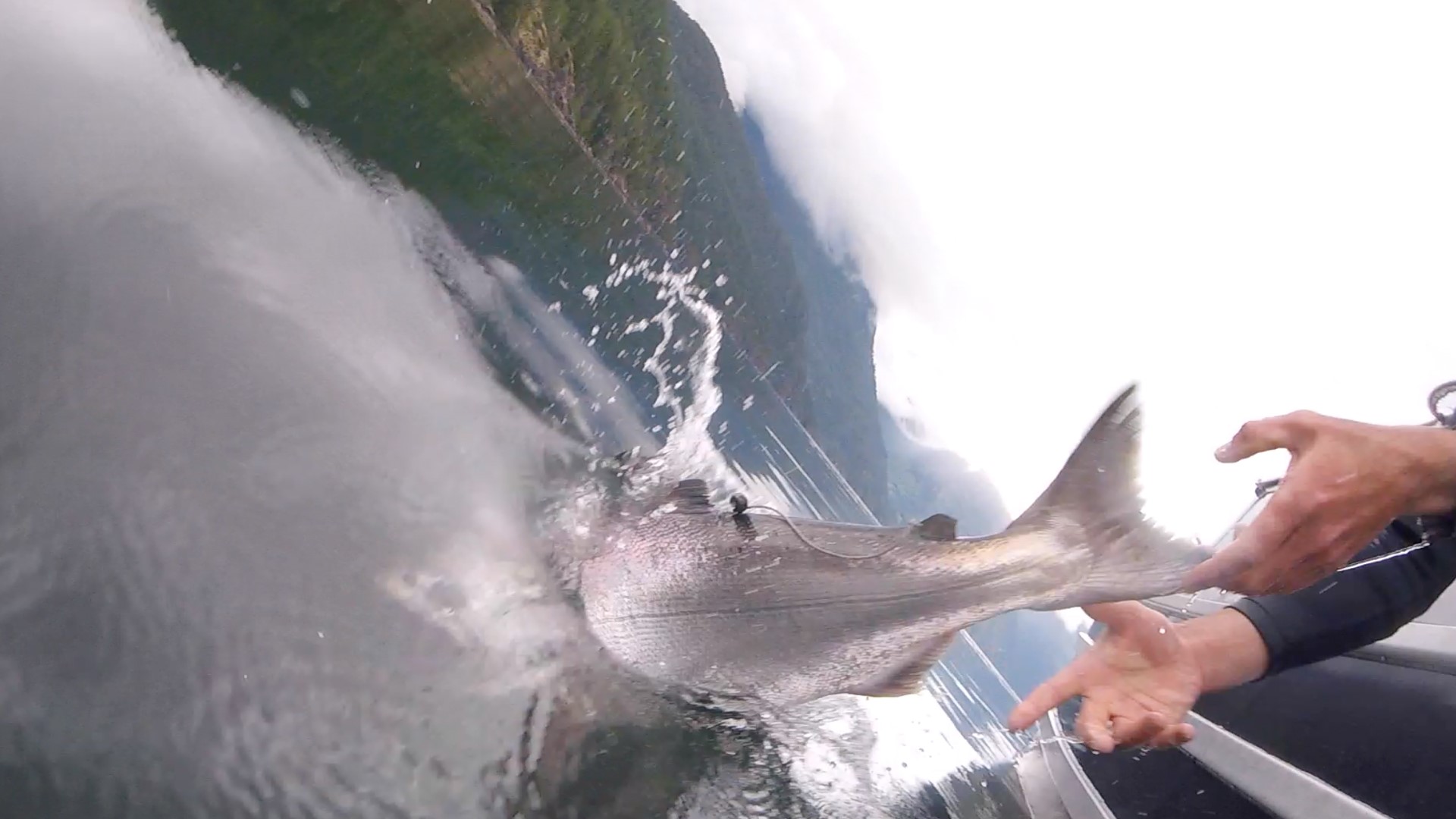A team of graduate students caught and tracked more than 1,500 Chinook and coho salmon in areas frequented by recreational fishers, such as the east coast of Vancouver Island, Barkley Sound, and Juan de Fuca Strait.
Results revealed several factors impact post-release mortality rates, some of which were unexpected. These included hook size and type, air exposure, landing net use, injury level, species, age, and body size.

UBC researchers take a non-invasive gill biopsy from a captured Chinook salmon to study infectious agents.
Injuries sustained during fishing particularly impacted released salmon. Fish with injuries to fins, scales, and eyes had on average up to 20 per cent poorer survival in the 10 days after release compared to fish that were in good physical condition.
Eye injuries, which are related to larger hook sizes, showed a further 20 per cent reduction in survival after 40 days.
“What really surprised me was just how delicate marine salmon are,” says Hinch. “We all know that scales come off these fish when you handle them, but we found the level of scale loss and fin damage caused by landing nets and handling were directly related to their subsequent survival.”




